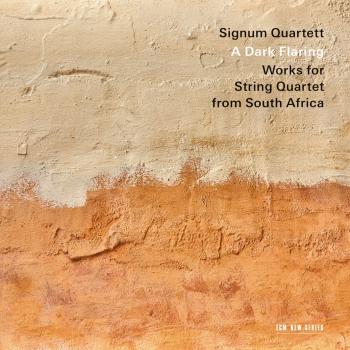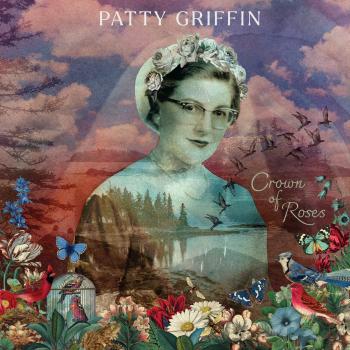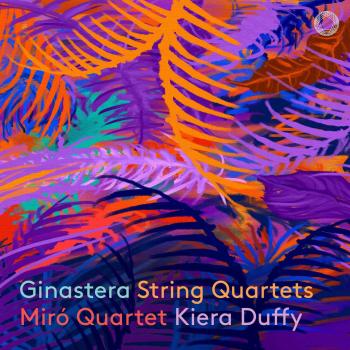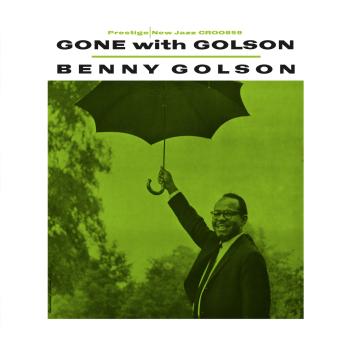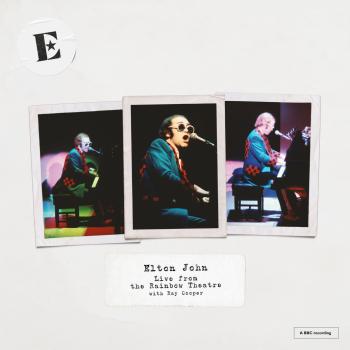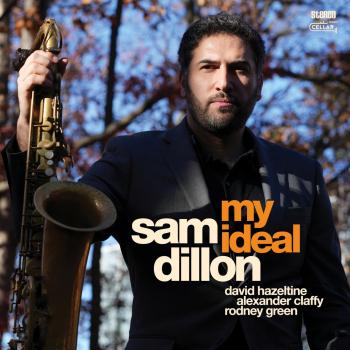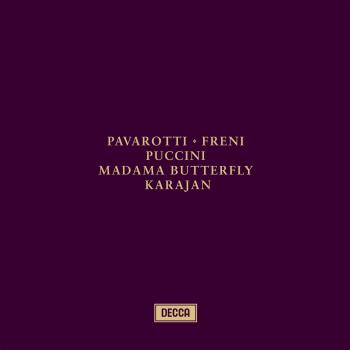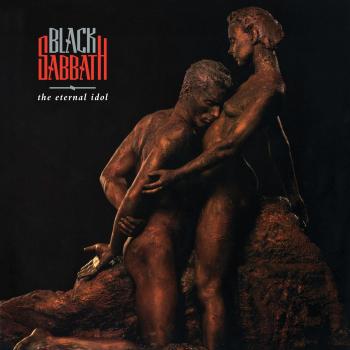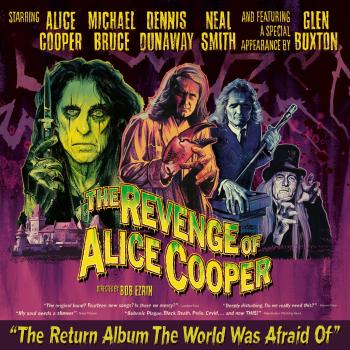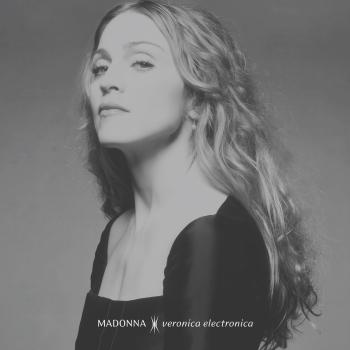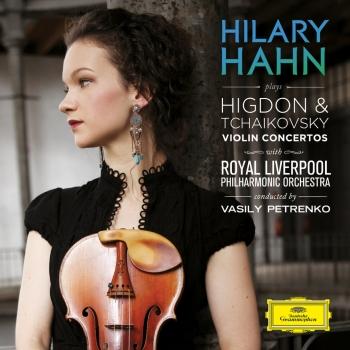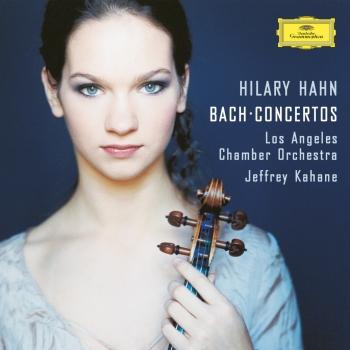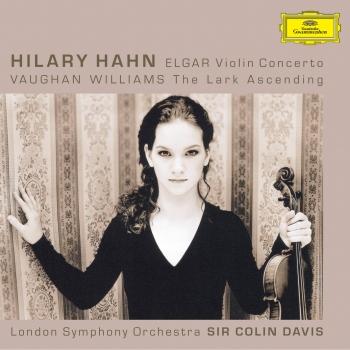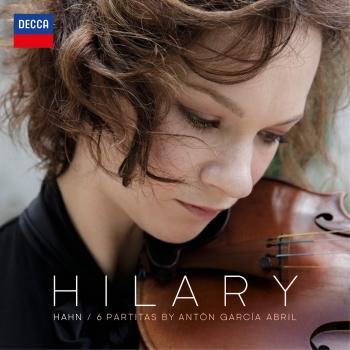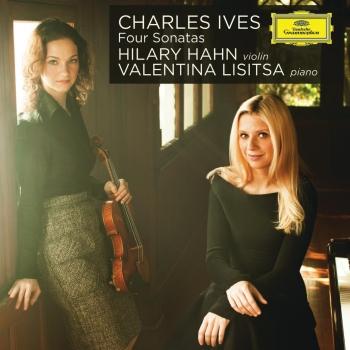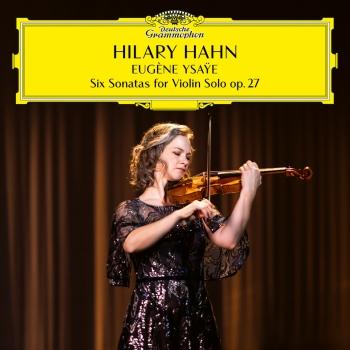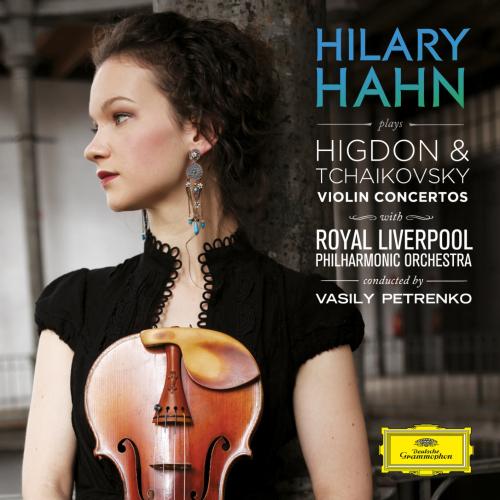
Tchaikovsky / Higdon: Violin Concertos Hilary Hahn
Album info
Album-Release:
2010
HRA-Release:
22.06.2018
Label: Deutsche Grammophon
Genre: Classical
Subgenre: Concertos
Artist: Hilary Hahn
Composer: Jennifer Higdon (1962), Pyotr Ilyich Tchaikovsky (1840-1893)
Album including Album cover Booklet (PDF)
I`m sorry!
Dear HIGHRESAUDIO Visitor,
due to territorial constraints and also different releases dates in each country you currently can`t purchase this album. We are updating our release dates twice a week. So, please feel free to check from time-to-time, if the album is available for your country.
We suggest, that you bookmark the album and use our Short List function.
Thank you for your understanding and patience.
Yours sincerely, HIGHRESAUDIO
- Jennifer Higdon (1962- ): Violin Concerto:
- 1 1726 14:23
- 2 Chaconni 12:18
- 3 Fly Forward 05:09
- Pyotr Ilyich Tchaikovsky (1840-1893): Violin Concerto In D Major, Op.35, TH.59:
- 4 I. Allegro moderato 19:23
- 5 II. Canzonetta (Andante) 06:23
- 6 III. Allegro vivacissimo 10:31
Info for Tchaikovsky / Higdon: Violin Concertos
Als ich 16 Jahre alt war, war die Komponistin Jennifer Higdon meine ideenreiche, inspirierende Lehrerin für Musikgeschichte des 20. Jahrhunderts am Curtis Institute of Music in Philadelphia. Sie war im Begriff, eine der am häufigsten aufgeführten Komponistinnen in Amerika zu werden. Ein paar Jahre nach meinem Abschluss nahm ich an der Premiere von Dark Wood teil, Jennifers Fagottquartett. Es lief so gut, dass wir anfingen, über eine Zusammenarbeit für eine neue Violinsonate oder ein neues Violinkonzert zu reden. Aber wir waren beide zu beschäftigt, und die Jahre vergingen.
Schließlich entschieden wir uns 2005 auf einem Empfang in Baltimore für ein Konzert. Das Curtis Institute und die Orchester von Indianapolis, Baltimore und Toronto meldeten sich schon bald als gemeinsame Auftraggeber und vereinbarten eine Reihe von Aufführungen. Im Herbst 2008 hielt ich das Konzert dann in den Händen. Es war auf den ersten Blick klar, dass seine verschachtelten Rhythmen, ungewöhnlichen Passagen und aufwendigen Ensemblesätze eine Herausforderung sowohl für jedes Orchester als auch für mich sein würden, und das gefiel mir. Besonders reizte mich die Art und Weise, in der die Violine einzelne Abschnitte aus dem Ensemble hervorheben und dadurch das Gefühl eines Konzerts für Orchester vermitteln würde.
Der erste komplette Durchgang fand mit dem Curtis Orchester in der Curtis Hall statt. Nach einem ausgiebigen Probentag, an dem Jennifer Higdon die Partitur überarbeitete, während wir sie durchgingen, fingen wir mit dem letzten vollständigen Durchlauf an. Alle Müdigkeit war sofort verschwunden. Jeder Moment brachte etwas Neues, und jede Note sprühte voller Elektrizität. Am Ende waren wir erschöpft und gleichzeitig vollkommen begeistert. Niemanden im Raum hätte es gewundert zu hören, dass die offizielle Premiere von Higdons Konzert ein paar Monate später in Indianapolis sowohl beim Publikum als auch bei der Presse auf große Begeisterung stoßen würde.
Tschaikowskys Konzert kam auf anderem Wege zu mir: Jascha Brodsky brachte es mir bei, als ich eine junge Schülerin am Curtis Institute war. Ich spielte es zum ersten Mal mit einem Pianisten bei einem Liederabend der Musikschüler in der Curtis Hall in Philadelphia, als ich 13 Jahre alt war. Danach folgte eine Reihe von Aufführungen mit Orchester, bevor ich das Konzert von Tschaikowsky in meiner Teenagerzeit für – wie ich dachte – ein bis zwei Jahre zur Seite legte.
Es kam jedoch anders, und zehn Jahre vergingen. Während dieser Zeit arbeitete ich mit vielen erfahrenen Kollegen, machte Aufnahmen, reiste durch die Welt und nahm so viel ich nur konnte in mein Repertoire auf. Als ich letztendlich zu Tschaikowsky zurückkehrte, war ich erstaunt, wie anders ich das Stück jetzt auffasste. In meinen Teenagerjahren war es ein eindrucksvoller Koloss von einem Konzert, aber nun schien es facettenreicher und voller feiner Nuancen, eher wie eine Figur der Literatur: impulsiv, dennoch bedacht, feurig, jedoch verletzlich, romantisch, trotzdem fast klassisch in seinen Gesten. Als Schülerin hatte ich Leopold Auers Version verwendet, die Kürzungen und Ausschmückungen beinhaltet, von denen ich annahm, dass sie notwendig seien. Aber dieses Mal ging ich zu Tschaikowskys Originalversion zurück. Dadurch erhielt das Konzert einen längeren, dramatischen Bogen und – in meinen Ohren – eine ausgeglichenere Vitalität. Aus diesem Grund habe ich diese Version hier aufgenommen.
Manch einer mag fragen, warum ich mir gewünscht habe, die Konzerte von Higdon und Tschaikowsky zusammen darzubieten. Die Antwort ist für mich recht einfach. Ich bin der Meinung, dass diese intensiven, großartig durchdachten Konzerte, die beide für mich durch meine Zeit am Curtis Institute miteinander verbunden sind, sich gegenseitig erhellen. Obwohl sie aus verschiedenen Jahrhunderten und unterschiedlichen kompositorischen Welten stammen, haben sie doch eine Vielzahl von Qualitäten gemeinsam: lyrische Zartheit, grüblerische Eleganz, energische Unbekümmertheit und große geistige Reife. Spielt man sie nacheinander, dann zeigen sie die gesamte Palette der musikalischen Möglichkeiten auf, die der Violine zu Beginn des 21. Jahrhunderts offen stehen.
". . . die Geige und Hilary Hahn sind ganz in ihrem Element in diesem traditionell dreisätzig konzipierten, geigerisch fordernden Stück mit seiner anspringenden Rhythmik und Motorik, aber auch sehr schönen lyrischen Momenten. Der Orchesterpart reizt mit einer breiten Farbenpalette, Higdons Violinkonzert ist auch ein Konzert für Orchester . . . Wenn Hilary Hahn einen diffizilen Solopart angeht, fühlt sich der Hörer sicher wie in Abrahams Schoß. Geigerische Perfektion ist garantiert. Mit einer unglaublichen Sicherheit und Selbstverständlichkeit meistert sie natürlich auch Tschaikowsky. Ihren Part entfaltet Hahn in gemäßigten Tempi und Seelenruhe, mit glasklarer Artikulation und Tongebung." (Biørn Woll, Norbert Hornig, Fono Forum)
"Sie beeindruckt] durch Klarheit, Unangestrengtheit, Ruhe. Hilary Hahn verwandelt, und das macht sie so einmalig, stets Struktur in Magie . . . [Hahn findet die Verbindung zwischen den beiden Konzerten], weil sie auf kristalline Klarheit setzt, um die Strukturen zum Leuchten zu bringen." (Reinhard J. Brembeck, Süddeutsche Zeitung)
"[Tchaikovsky]: Als ob sie das Stück vom Vorurteil des Virtuosen-Schlachtrosses befreien wollte, spielt sie den Kopfsatz ganz nach innen, fast wie eine Meditation. Das ist natürlich, wie immer bei Hahn, lupenrein und fantastisch locker gegeigt . . ." (Jörg Königsdorf, Rondo)
Hilary Hahn, Violine
Royal Liverpool Philharmonic Orchestra
Vasily Petrenko, Dirigent
Hilary Hahn
Three-time Grammy Award-winning violinist Hilary Hahn is renowned for her virtuosity, expansive interpretations, and creative programming. Her dynamic approach to music-making and her commitment to sharing her musical experiences with a broad global community have made her a fan favorite.
Hahn’s distinct stylistic choices honor the traditional violin literature while delving into the unexpected. In the past two seasons in recital tours across the United States, Europe, and Japan, she premiered six new partitas for solo violin by composer Antón García Abril. The works were Hahn’s first commissioning project for solo violin and her first commission of a set of works from a single composer. García Abril was also one of the composers for “In 27 Pieces: the Hilary Hahn Encores,” Hahn’s multi-year commissioning project to revitalize the duo encore genre. Her album of those encores won a Grammy for Best Chamber Music/Small Ensemble Performance in 2015, and the print edition of the complete sheet music will be released by Boosey & Hawkes. Complete with Hahn’s fingerings, bowings, and performance notes, the sheet music will ensure that the encores become part of the active violin repertoire.
In 2017–18 Hahn returned to repertoire from the 19th and 20th centuries, performing the Tchaikovsky, Dvořák, and first Prokofiev violin concertos across the United States and Europe. She performs Bernstein’s Serenade (after Plato’s “Symposium”) with the Los Angeles Philharmonic, Philadelphia Orchestra at home and at Carnegie Hall, and Houston Symphony at home and on tour in Belgium, Poland, Austria, and Germany as part of the celebrations of Bernstein’s centennial season.
As part of recent residencies at the Vienna Konzerthaus, Seattle Symphony, and National Orchestra of Lyon, Hahn piloted free – and sometimes surprise – concerts for parents with their babies, as well as a knitting circle, a community dance workshop, a yoga class, and art students. She continued to create these community-oriented concerts as the 2017–18 Artist-in-Residence at the Philadelphia Orchestra, encouraging music lovers to combine live performance with their interests outside the concert hall and providing opportunities for parents to enjoy live music with their infants. She also played a free concert to promote a college membership program and participates in the Philadelphia Orchestra’s ongoing educational activities.
Hahn’s 2018–19 season revolved around the music of Bach, a constant in her musical life. Upon her admission to the Curtis Institute of Music at the age of ten, Hahn dedicated part of nearly every lesson to solo Bach; at 17 she made her recording debut with Hilary Hahn Plays Bach, consisting of three of Bach’s pinnacle works for solo violin. In October 2018, she released the remaining three of the same set of pieces after two decades of anticipation from fans and critics alike, bringing her relationship to this music full circle with a worldwide solo Bach recital tour.
The season was also dedicated to another mainstay of Hahn’s artistic practice: collaboration. In 2019, Hahn premiered two new works written for her: Einojuhani Rautavaara’s Two Serenades for violin and orchestra, completed posthumously by Kalevi Aho, and Lera Auerbach’s Sonata No. 4: Fractured Dreams. The season was bookended by another major release: her most recent solo commission, 6 Partitas by Antón García Abril. García Abril, Auerbach, and Rautavaara had been contributing composers for In 27 Pieces: the Hilary Hahn Encores, Hahn’s Grammy Award-winning multi-year commissioning project to revitalize the duo encore genre. A print edition of the complete sheet music was recently released by Boosey & Hawkes; it contains Hahn’s fingerings, bowings, and performance notes, ensuring that the encores become part of the active violin repertoire.
Hahn took her first violin lessons in the Suzuki program of the Peabody Institute in her hometown of Baltimore at the age of three, and at five she began lessons with Klara Berkovich, who had just emigrated from St. Petersburg. At ten, Hahn was admitted to the Curtis Institute of Music in Philadelphia to study with Jascha Brodsky, a former pupil of Eugène Ysaÿe and Efrem Zimbalist. Hahn completed her university requirements at sixteen, having already made her solo debuts with the Baltimore, Pittsburgh, Utah, and Bavarian Radio symphony orchestras; the Philadelphia, Cleveland, and Budapest Festival orchestras, and the New York Philharmonic, among others. Hahn continued her studies for three more years, delving into languages, literature, and writing, and received her bachelor’s degree at nineteen. She spent four summers at the Marlboro Music Festival and another four in the total-immersion German, French, and Japanese programs at Middlebury College. She holds honorary doctorates from Middlebury College and Ball State University, where there are also three scholarships in her name.
Hahn has released sixteen albums on the Deutsche Grammophon and Sony labels, in addition to three DVDs, an Oscar-nominated movie soundtrack, an award-winning recording for children, and various compilations. Spanning an extremely wide range of repertoire, including Bach, Stravinsky, Elgar, Beethoven, Vaughan Williams, Mozart, Schoenberg, Paganini, Spohr, Barber, Bernstein, Ives, Higdon, and Tchaikovsky, her recordings have received every critical prize in the international press and have met with equal popular success. All have debuted in the top ten of the Billboard classical chart. Her seventeenth album will be a retrospective collection that also contains new live material and art from her fans, in keeping with a decades-long tradition of collecting fan art at concerts.
Hahn’s first Grammy came in 2003 for her Brahms and Stravinsky concerto album. A pairing of the Schoenberg and Sibelius concerti spent 23 weeks on the charts and earned Hahn her second Grammy. In 2010 she premiered her recording of Jennifer Higdon’s Violin Concerto along with the Tchaikovsky concerto. Higdon’s composition, which was written for Hahn, went on to win the Pulitzer Prize. In 2012 Hahn launched Silfra with experimental prepared-pianist Hauschka. The album was produced by Valgeir Sigurðsson and was entirely improvised by Hahn and Hauschka following an intensive period of development.
Hahn is an avid writer, having posted journal entries for two decades on her website, hilaryhahn.com, and published articles in mainstream media. On her YouTube channel, youtube.com/hilaryhahnvideos, she interviews colleagues about their experiences in music. Her violin case comments on life as a traveling companion, on Twitter and Instagram at @violincase. In 2001, Hahn was named “America’s Best Young Classical Musician” by Time magazine, and in 2010, she appeared on The Tonight Show with Conan O’Brien. Hahn was featured in the Oscar-nominated soundtrack to The Village and has participated in a number of non-classical productions, collaborating on two records by the alt-rock band ….And You Will Know Us By The Trail of Dead, on the album Grand Forks by Tom Brosseau, and on tour with folk-rock singer-songwriter Josh Ritter.
Valentina Lisitsa
With more than 83 million YouTube views and some 165,000 subscribers to her channel, Valentina Lisitsa is one of the most watched classical musicians on the internet, using digital innovation to champion classical music and performance. Impressed by her YouTube success, the Royal Albert Hall, in an unprecedented step, opened its doors for Valentina’s London debut on 19 June 2012. That concert, recorded and filmed by Decca Classics, became her first release on the label; it was also Google’s first-ever live HD stream.
With her multi-faceted playing described as “dazzling”, Lisitsa is at ease in a vast repertoire ranging from Bach and Mozart to Shostakovich and Bernstein; her orchestral repertoire alone includes more than 40 concertos. She has a special affinity for the music of Rachmaninov and Beethoven and continues to add to her vast repertoire each season.
Born in Kiev, Ukraine, in 1973, Lisitsa began playing the piano at the age of three, giving her first solo recital a year later. She gained a place at the Lysenko Music School for Gifted Children and later studied under Ludmilla Tsvierko at the Kiev Conservatory. In 1991 she won the Murray Dranoff Two Piano Competition together with Alexei Kuznetsoff. The couple married the following year and took the huge gamble of moving to the USA. In 1995 Lisitsa made her New York debut at the Mostly Mozart Festival at Lincoln Center. Since then, she has performed extensively around the world and appeared in such venues as London’s Wigmore Hall and Vienna’s Musikverein. When her career seemed to be flagging, it was spectacularly reignited by a home-made DVD, shot by her husband in 2006, of Valentina playing the 24 Chopin Études. Offered on Amazon, sales of the unedited recording skyrocketed after the couple posted it on YouTube. Valentina Lisitsa had found international fame online. Subsequent YouTube videos expanded her following, culminating in the 2012 Albert Hall recital.
In February 2013 she made her debut in the main auditorium of the Berlin Philharmonie and during the year also gave recitals throughout Europe, in Washington, Brisbane and Seoul. As well as returning to the Berlin Philharmonie for a recital in December, Valentina also appeared in New York on 19 October to open the 92nd St. Y series with a programme chosen by the public online. The year’s concerto commitments took her across the USA as well as to Mexico City, Hong Kong, Taiwan and the BBC Proms in London. 2014 included concerts in Dresden, Los Angeles, Paris, Vienna, Istanbul, Milan, Sao Paulo, Leipzig and on tour in Japan as well as recitals in St. Paul, Paris, Bucharest, Quebec, at London’s Wigmore Hall, the Bristol Proms and Menuhin Gstaad Festival and on tour in the Netherlands and Germany. Highlights of 2015 included performances with the Cincinnati Symphony, Royal Stockholm Philharmonic, Prague Symphony, Calgary Philharmonic and Baltimore Symphony orchestras as well as a recital tour of South Korea.
In 2012 Valentina Lisitsa signed an exclusive agreement with Decca Classics. Her June 2012 Albert Hall recital, immediately available as both CD and DVD for pre-order on the night of the concert, was followed by a 2-CD release of the complete concertos of Rachmaninov and Paganini Rhapsody with the London Symphony Orchestra under Michael Francis. 2013 saw the release of an exciting all-Liszt recital on both CD and LP. In spring 2014, Decca issued Chasing Pianos, Valentina’s recording of the piano music of Michael Nyman, in celebration of the composer’s 70th birthday. Featuring music from Nyman’s soundtracks to well-loved films such as The Piano and Wonderland, the companion digital release represents the complete published Nyman oeuvre for piano, running to over 110 minutes. November 2014 brought the release of Études, an album comprising Schumann’s Symphonic Études as well as all of Chopin’s contributions to the genre. In her next Decca release, released in April 2015, Valentina played the piano music of Philip Glass.
The 2019/2020 season saw Valentina perform recitals in Istanbul, Vienna, Zurich, Rome Geneva, Essen and Brussels and a return to Madison and Amelia Island Chamber Music Festivals in the USA. She also made her debut with Philharmonia Orchestra under Alpesh Chauhan performing Shostakovich Piano Concerto No 2 and returned to Fort Wayne Philharmonic with a programme including Piano Themes from Cinema’s Golden Age and tours New Zealand with New Zealand Symphony Orchestra performing Prokofiev Piano Concerto No. 3.
Highlights of the past seasons include amongst others a sold-out concert at Auditorio Nacional with the Spanish National Orchestra, where Valentina played all piano concertos and the Rhapsody on a Theme of Paganini by Sergej Rachmaninoff in one evening. She has also performed at Berlin Philharmonie, Théâtre des Champs Elysées in Paris, the Great Hall of Moscow Conservatory, Wigmore Hall in London, Prinzregententheater in Munich, Carnegie Hall in New York, NCPA in Beijing, Teatro Major in Bogota and at festivals including the BBC Proms, Dvorak Prague Festival and Musica Mundi Chamber Festival in Brussels. In recent seasons, Valentina performed as a soloist with London Symphony Orchestra, Royal Stockholm Philharmonic Orchestra, Orchestre de Paris, Orchestre Philharmonique de Liège, Staatskapelle Dresden, Orquesta Sinfónica de Castilla y León, Cincinnati Symphony Orchestra and Baltimore Symphony Orchestra, and Seoul Philharmonic.
Booklet for Tchaikovsky / Higdon: Violin Concertos

